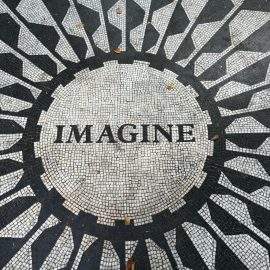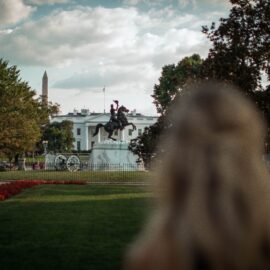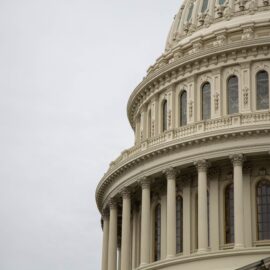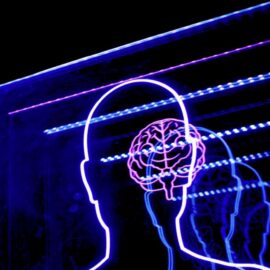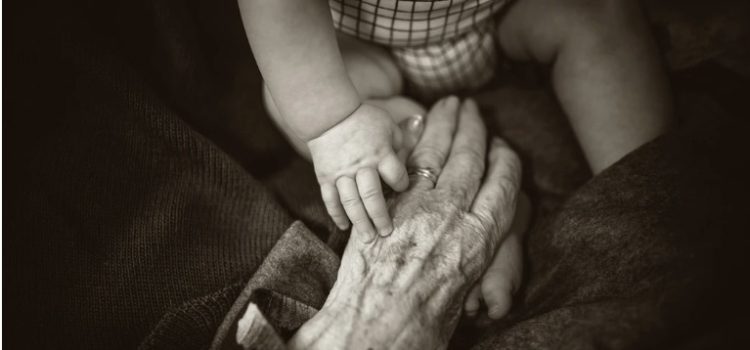
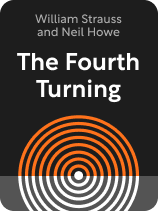
This article is an excerpt from the Shortform book guide to "The Fourth Turning" by William Strauss and Neil Howe. Shortform has the world's best summaries and analyses of books you should be reading.
Like this article? Sign up for a free trial here.
As you age, how does your role in society change? How much do young people impact the culture? Are generational archetypes like story archetypes?
According to William Strauss and Neil Howe, each generation in society fits into one of four different archetypes: the Prophet, the Nomad, the Hero, and the Artist. Each generational archetype has its own role to play in the culture.
Continue reading to learn about generational archetypes and the various ways they function and interact in society.
Generational Archetypes
The birth range of a generation is about 15 to 25 years—approximately the same length as a Turning—and the pattern proceeds almost universally in this order. The authors explain that, for every generational archetype, each phase of life is accompanied by unique social roles.
Archetype 1: Childhood
The childhood phase is defined by receiving support from others and learning morals. The way society views and treats children varies with the Turnings, shifting back and forth between the belief that children need to be highly protected and looked after and the belief that they need little protection with a tendency toward hands-off parenting.
Archetype 2: Young Adulthood
Young adulthood is defined by service to society and the testing of morals. It’s the age where people are building and pursuing their dreams, forming families, and carrying out the work that keeps society moving such as lower-level work and military service. The degree to which young adults respect and carry on the work of older generations varies with the Turnings, shifting between dutiful conformity and rebellious individualism.
Archetype 3: Midlife
Midlife is defined by managing society and upholding morals. This is when people are reaping the rewards from their work during young adulthood, making their dreams a reality, and beginning to take on leadership roles in society. Depending on the Turning, mid-lifers’ leadership roles shift between being more pronounced in politics and being more pronounced in culture.
Archetype 4: Elderhood
Elderhood is defined by leading society and passing on morals to younger generations. People are relieved of the burden of work and spend their time in leisure and recreation, or they take on society’s most powerful leadership positions. The influence that Elders have on society shifts with the Turnings between culture and politics—when mid-lifers are wielding greater influence in politics, elder influence shifts to culture and vice versa.
| How Age Affects a Group’s Influence on Society Research indicates that young people have a greater influence on culture than Strauss and Howe’s theory may suggest. While it’s easier to study culture in midlife and elder generations because their traits are more fixed, much of social change is prompted by young people, and cultural change is generally more rapid in groups that include both younger and older individuals. Political participation across the generations, however, matches up with the authors’ descriptions, with participation and leadership levels increasing with age. For one, younger people are less likely to vote than older people, which may be due to factors like less free time and less stable housing for younger generations. Younger people are also underrepresented in political office, and research suggests that financial barriers play a large role in preventing younger people from running—it can cost hundreds of thousands of dollars to run a political campaign and usually takes up too much time to be compatible with a typical work or school schedule. In the US, elderhood has more political sway than ever, as political participation and leadership are extending later and later into elderhood, leaving midlifers and especially young adults behind. The median age of Members of Congress has increased by more than seven years over the last three decades, from around 53 to over 60, and around 25% of Congresspeople are now over 70. Additionally, the 2020 presidential election resulted in the election of the nation’s oldest president in history—Joe Biden at age 78. This trend has raised concerns that America’s government is becoming a gerontocracy, which disproportionately represents the interests of the elderly who may have less investment in the nation’s future than younger people. It has prompted some to call for maximum age limits on political office, which the majority of Americans support, but which experts say are unlikely to be enacted. |
The Progression of Generational Archetypes
As they go through the phases of life, the generational archetypes take on new roles and characteristics, such as the following:
- Prophets are born during a High. In childhood, Prophets are coddled, and they grow into self-centered rebels who seek societal change. They are judgmental in midlife but can provide wise judgment in their elder years.
- Nomads are born during an Awakening. In childhood, Nomads are loosely parented or neglected. They feel estranged and are stigmatized in young adulthood, but they become sensible mid-lifers who provide practical leadership, and they’re hardy and reliable in elderhood.
- Heroes are born during an Unraveling. In childhood, Heroes are heavily protected. They have a strong sense of teamwork, duty, and self-sacrifice in young adulthood, but grow arrogant in midlife. As elders, they find the values they fought for under attack by the Prophet young adults.
- Artists are born during a Crisis. In childhood, Artists are overprotected. In young adulthood, they’re thoughtful and deferential. They make for ambivalent midlife leaders and compassionate elders.
| Archetypes and Story Arcs These generational archetypes and their life progressions are similar to some of the classic story archetypes. The Prophet generation could represent a tragedy story arc, as they progress from the High in which they’re born through a lifelong dismantling of the High, ending in a Crisis where they have gained the wisdom of learning from their many mistakes. The Nomad generation represents a “voyage and return” story arc, living their youth feeling disconnected and cut off from other generations but growing strong and practical from their isolated journeys. The Hero generation represents an overcoming the monster story arc. In their youth, they’re faced with an overwhelming threat they have to solve by putting aside their own needs for the greater good, after which they can bask in the aftermath of their victory. The Artist generation represents a rebirth story arc. Born during the tumult of a Crisis, in their youth they experience the rebirth into the renewed society of a High, growing sensitive and thoughtful from their experience and retaining that sensitivity as society descends back toward the Unraveling and Crisis. |

———End of Preview———
Like what you just read? Read the rest of the world's best book summary and analysis of William Strauss and Neil Howe's "The Fourth Turning" at Shortform.
Here's what you'll find in our full The Fourth Turning summary:
- How Anglo-American history follows a pattern of four 15 to 25-year periods
- How the behaviors of different generations define these Turnings
- Predictions about the next Turning—a Crisis


